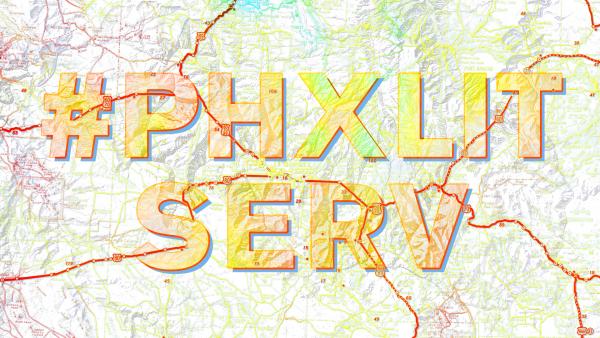
PHOENIX (October 3, 2012). The Arizona Commission on the Arts, an agency of the State of Arizona, today launches the nomination process for the inaugural Arizona Poet Laureate.
At the start of the last legislative session, Arizona was one of only eight states without a poet laureate. The Arts Commission and the Arizona literary community worked in close partnership with State Senator Al Melvin during the Fiftieth Legislature’s second regular session, to put forth a bill establishing a poet laureate post for the State of Arizona. On May 11, 2012, Governor Jan Brewer signed SB1348 into law, and October marks the beginning of the nomination, review and selection process.
Jaime Dempsey, Deputy Director of the Arts Commission, said of the process, “It is our hope that the appointed Arizona Poet Laureate will champion the art of American poetry, inspire an emerging generation of literary artists, and educate Arizonans about poets and authors who have influenced our state through creative literary expression.”
The bill specifies that the appointed poet laureate will serve a term of two years; will offer public readings throughout the year, in both urban and rural communities in various regions of the state; and will pursue a major literary project over the course of the appointment term.
The Arizona Poet Laureate will be provided with an annual honorarium of $2,500 to offset travel and so that he/she is able to actively serve the broadest constituency of Arizonans, who live, learn and work in urban, rural and suburban areas of the state. The honorarium will be disbursed from the Arizona Poet Laureate Fund, which consists of private monies donated by individuals, organizations or businesses – raised by the Arts Commission and its statewide literary partners.
Interested parties may nominate themselves or others for the position of Arizona Poet Laureate through a process managed by the Arizona Commission on the Arts. The initial deadline for nominations is November 9, 2012. To review details and information regarding the nomination/application and selection process, visit http://www.azarts.gov/azpoetlaureate.
“We would like to recognize and thank Arizona Senator Al Melvin, who introduced the bill and shepherded it through the legislative process, and to our partners in arts advocacy, the Arizona Citizens for the Arts for helping to see this bill through to success,” said Bob Booker, Executive Director.
Read the bill here.
About the Arizona Commission on the Arts
One of 56 state and jurisdictional arts agencies across the United States, the Arizona Commission on the Arts is an agency of the State of Arizona that supports a statewide arts network. The Arizona Commission on the Arts supports access to quality arts and arts education opportunities for all Arizona citizens; the development and retention of statewide jobs in the nonprofit arts, culture and education sectors; and increased economic impact in local communities through arts-based partnerships that develop tax and small business revenue.
For more information about the grants, services and programs of the Arizona Commission on the Arts, visit www.azarts.gov.
We imagine an Arizona where everyone can participate in and experience the arts.




